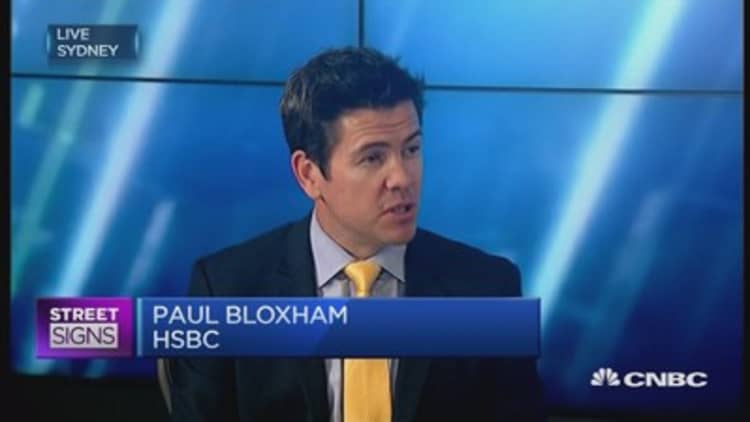Trading the Australian dollar was a classic play for those who didn't have direct access to China, and a sure-fire winner on the short side as the Chinese economy slowed.
The decline in the AUD reflected not just China's economic slowdown,but also the fundamental weaknesses in the structure of the Australian economy. It was ironic that those who criticized China for its over-dependence on exports fell into the very same trap.
The inclusion of the Yuan into the International Monetary Fund's Special Drawing Rights (SDR) basket of currencies adds further down pressure on the Aussie. Why trade the AUD when you can trade the yuan directly without the complications of using a third-party currency as a proxy?
The answer is simple and the consequence is obvious. You won't, which will add to weakness in the AUD as interbank money moves into more direct exposure to the yuan.
The Aussie follows the long tradition of Australian underdogs and has consolidated around $0.71 with small rallies to $0.72. It's a heroic attempt to climb back but one that is doomed to failure. This is just a ledge in the Valley of Death for the AUD.
The weekly AUD chart has two dominant features. The first is the prolonged and steady downtrend that is well defined when studied using a Guppy Multiple Moving Average (GMMA) indicator. The fall below $0.93 in September 2014 was an accelerated continuation of the downtrend.

The long-term GMMA group of averages rapidly expanded after that, showing sustained and consistent selling pressure. No subsequent rally, including that in May 2015, has caused any compression in the long-term GMMA.
The second feature is the way the Aussie trades in bands about $0.08 wide. These bands are used to set the downside targets in the trend. The trading band measurement was used to set the target below support near $0.79. This gave a downside target of $0.715, which has been achieved and exceeded. The next downside target is near $0.635
The last time the Aussie was at $0.64 was in 2008, at the depth of the global stock markets collapse, when the ASX 200 was at 3,300. The currency collapse also signaled a short trade in the Australian index.
We use the ANTSSYS method to trade both the sustained falls below support levels and the shorter-term consolidation volatility.
The Australian Reserve Bank Governor Steven has talked the Aussie down to $0.67 but the chart support is near $0.64. To recap, the ailing Aussie reflects the poor health of the Australian economy. The inclusion of the yuan in the SDR basket removes the need to trade the Aussie as a proxy for China and this increases downside pressure. Both the AUD crosses and the Australian benchmark index provide secular shorting opportunities.
Daryl Guppy is a trader and author of Trend Trading, The 36 Strategies of the Chinese for Financial Traders, available at www.guppytraders.com. He is a regular guest on CNBC Asia Squawk Box and a speaker at trading conferences in China, Asia, Australia and Europe.






